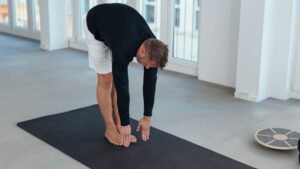A balanced fitness routine isn’t just about hitting the gym or logging miles on the treadmill. True fitness encompasses strength, cardiovascular health, and flexibility, working together to support your overall well-being. By creating a balanced routine, you can build muscle, improve endurance, enhance mobility, and reduce the risk of injury, all while keeping your workouts varied and enjoyable.
This article breaks down the three pillars of fitness—strength, cardio, and flexibility—and provides practical advice on how to incorporate each into your routine.
The Three Pillars of Fitness
- Strength Training
Strength training focuses on building muscle and improving bone density, both of which are essential for long-term health. It also boosts metabolism, helping you burn more calories even at rest.
Benefits:
- Increases muscle mass and strength.
- Supports joint health and stability.
- Enhances functional fitness for daily tasks.
Examples:
- Weightlifting (e.g., dumbbells, barbells, kettlebells).
- Resistance band exercises.
- Bodyweight workouts (e.g., push-ups, squats, lunges).
Aim for 2-3 sessions per week, targeting all major muscle groups. Beginners can start with lighter weights or bodyweight exercises to master proper form before progressing.

- Cardiovascular Exercise
Cardio workouts strengthen your heart and lungs, improve endurance, and help burn calories. They’re also excellent for mental health, releasing endorphins that elevate your mood.
Benefits:
- Enhances cardiovascular health.
- Increases stamina and endurance.
- Supports weight management.
Examples:
- Steady-state activities: jogging, swimming, cycling.
- High-Intensity Interval Training (HIIT): alternating bursts of intense activity with rest periods.
- Low-impact options: brisk walking, elliptical training.
For general health, aim for at least 150 minutes of moderate-intensity cardio or 75 minutes of vigorous activity per week, as recommended by health guidelines.

- Flexibility and Mobility
Flexibility and mobility exercises improve the range of motion in your joints and muscles, reducing stiffness and the risk of injury. They also complement strength and cardio by aiding recovery and improving performance.
Benefits:
- Prevents muscle imbalances and injuries.
- Improves posture and alignment.
- Enhances overall movement efficiency.
Examples:
- Yoga or Pilates classes.
- Dynamic stretches (e.g., leg swings, arm circles).
- Static stretching (holding stretches for 15-30 seconds).
Incorporate flexibility work 2-3 times per week or as part of your warm-up and cool-down routines.
Why Balance Matters
Focusing exclusively on one aspect of fitness can lead to overtraining and neglect of other essential components. For example, strength training alone may build muscle but neglect cardiovascular endurance, while too much cardio can lead to muscle loss.
A balanced routine provides:
- Injury Prevention: Strengthening muscles and improving mobility reduces the likelihood of strains and joint issues.
- Sustainable Progress: Varied workouts prevent plateaus and keep your body adapting.
- Enhanced Overall Fitness: Combining strength, cardio, and flexibility ensures you’re fit for all aspects of life.
Designing a Weekly Routine
Creating a balanced schedule doesn’t mean spending hours at the gym every day. With a little planning, you can achieve variety and balance.
Example Beginner Schedule:
- Monday: Full-body strength training (30-40 minutes).
- Tuesday: Light cardio (e.g., brisk walking or cycling for 30 minutes).
- Wednesday: Yoga or stretching session (20-30 minutes).
- Thursday: Strength training (upper body focus, 30-40 minutes).
- Friday: HIIT cardio session (20 minutes).
- Saturday: Active recovery (e.g., light stretching or a gentle walk).
- Sunday: Rest day.
Intermediate Example Schedule:
- Monday: Lower-body strength training (40 minutes).
- Tuesday: Moderate-intensity cardio (e.g., running or swimming for 30 minutes).
- Wednesday: Mobility-focused yoga or Pilates (30 minutes).
- Thursday: Upper-body strength training (40 minutes).
- Friday: HIIT cardio (20-30 minutes).
- Saturday: Full-body functional strength workout (30-40 minutes).
- Sunday: Rest or light stretching.
Incorporating Rest and Recovery
Rest is a critical yet often overlooked component of fitness. Overtraining can lead to burnout, fatigue, and injuries. Allow your body time to recover by scheduling 1-2 rest days per week.
Active Recovery Ideas:
- Light yoga or tai chi.
- A leisurely walk outdoors.
- Foam rolling or self-myofascial release.
Active recovery keeps you moving without putting stress on your body.
Adapting to Your Goals
Your fitness routine should align with your personal goals. Whether you’re aiming for weight loss, muscle gain, or overall health, adjust the focus of your workouts accordingly.
- For Weight Loss: Increase cardio and ensure your diet supports a calorie deficit.
- For Muscle Gain: Focus on strength training and consume adequate protein.
- For General Health: Maintain a balanced approach with equal emphasis on all three pillars.
Regularly assess your progress and make adjustments to keep challenging yourself.
Conclusion
Building a balanced fitness routine is the key to achieving long-term health and well-being. By incorporating strength, cardio, and flexibility into your weekly schedule, you’ll create a comprehensive programme that keeps you energised, motivated, and injury-free.
Start small, stay consistent, and remember that balance is the foundation of success. Your body—and mind—will thank you for it.




